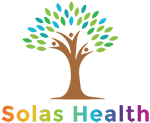
Know Hope Billboards Show Lives Lost Across North Carolina
Shedding light on a statewide crisis is the mission behind the nonprofit "Know Hope North Carolina," according to a news report on WECT. In 2021, over 4,000 North Carolina residents lost their lives to opioid overdoses, each with a story to tell. Each had friends and family members left behind, many a sad void that they still grapple with daily. And now, a billboard will show the faces behind the statistics.
"It's a nonprofit aimed at honoring the memory of those we've lost, offering hope to those in the throes of addiction, and providing support to those in recovery," explained Freida MacDonald, the founder of Know Hope NC.
MacDonald's journey began tragically when her son fell victim to substance abuse disorder in 2016. Witnessing the shared anguish among other families grappling with similar losses, she felt compelled to start this organization.
Billboards of Faces Across North Carolina
Among Know Hope's initiatives is the placement of billboards featuring the faces of those lost to substance abuse and addiction.
"I lost my son in Wilmington," MacDonald revealed. "Seeing his face on those billboards hits me deeply. It reminds me that his legacy endures, making a tangible impact even eight years later."
Denise West, a resident of Leland, experienced her heartache when her son succumbed to an overdose in 2019. Finding solace in Know Hope, she shared her perspective.
"I was adrift before this, unsure where to turn," West confessed. "But then, I found Know Hope."
The connection between West and MacDonald was forged at an overdose prevention event in Wilmington. They bonded over necklaces bearing the fingerprints of their sons, a poignant symbol of their shared sorrow. For West, seeing her son's face on the billboards brought a sense of communal support amidst her grief.
"Amidst traffic, at stoplights, those faces remind us—they're our children," West asserted. "Each banner showcases 100 faces, totaling 300 in all."
Raising Awareness of Addiction and Fentanyl
West views the billboards as an opportunity for parents to engage with their children, fostering dialogue and awareness about the realities of substance abuse.
"It's crucial to converse with your kids rather than facing an urn," West emphasized. "As difficult as it may be, it's necessary."
MacDonald highlighted the potential of the billboards to offer hope to those grappling with addiction themselves.
"I encountered a man in detox who told me he saw our billboard and it prompted him to seek help," MacDonald shared. "Those faces lingered in his mind, compelling him to take action."
Opioid and Fentanyl Overdoses Aren't Slowing Down
Fentanyl's grip on individuals, particularly among younger demographics like those in North Carolina, underscores a concerning trend in substance abuse. Its high addictive potential stems from several critical factors, including its pervasiveness and the fact that it is now found tainting other drugs, too, either as an additive or adulterant.
Fentanyl's potency surpasses that of other opioids like morphine or heroin by several orders of magnitude. As a synthetic opioid, it can be up to 100 times more potent than morphine and considerably more potent than heroin. Its rapid onset and short duration of action contribute to its allure for individuals seeking intense and immediate highs. This quick onset can quickly lead to dependence and addiction as users chase the euphoria and relief from pain or emotional distress that fentanyl provides.
One significant contributing to fentanyl's growing prevalence, particularly among younger populations, is its accessibility. Illicitly manufactured fentanyl, often produced in clandestine laboratories, floods the black market and is frequently mixed with other drugs like heroin or cocaine without the user's knowledge. This adulteration increases the risk of accidental overdose, as users may unknowingly consume dangerously potent doses of fentanyl.
Its relative affordability compared to other opioids makes it an attractive option for both users and traffickers. Its synthetic nature also enables producers to circumvent legal restrictions more easily, exacerbating its availability on the illicit market.
In North Carolina, like many other regions across the globe, the proliferation of fentanyl is contributing to a public health crisis. Its prevalence among younger demographics is particularly alarming, with reports of teenagers and young adults experimenting with or inadvertently consuming fentanyl-laced substances. Factors such as peer pressure, curiosity, and the misconception that prescription medications are safer than street drugs contribute to its appeal among this demographic.
To address the growing threat of fentanyl addiction among younger populations in North Carolina and beyond, comprehensive strategies are needed. This includes increasing access to evidence-based prevention, education, and harm reduction programs and expanding access to treatment and recovery services.
Billboards of Faces of Addiction Will Continue
The billboards will continue and will all feature a link to the Alcohol Drug Council of North Carolina.
This month's conference in Wrightsville Beach, hosted by the council, will spotlight the epidemic of fentanyl in North Carolina, with panelists and speakers from the Wilmington area offering insights and resources for individuals battling addiction and their families.
Getting Help for Addiction
If you or somebody you love is struggling with opioid addiction, we're here to help. When appropriate, we offer treatment for fentanyl addiction that includes medication that reduces cravings to help people in North Carolina find their way to recovery. Give us a call to learn more about our services.
If you are in need of help, please call us at: 910-295-7246 or message us.
Categories
fentanyl North Carolina opioids
